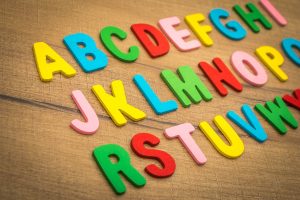 Long before your child utters their first word, they start communicating with you. From cries to squeals to cooing to even blowing raspberries, they’re experimenting with communication and, eventually, language. As you watch these language milestones unfold, it’s easy to get excited — but it’s also easy to become nervous. You might wonder if your child is achieving milestones at the right times, and you might look for ways to help nudge them along.
Long before your child utters their first word, they start communicating with you. From cries to squeals to cooing to even blowing raspberries, they’re experimenting with communication and, eventually, language. As you watch these language milestones unfold, it’s easy to get excited — but it’s also easy to become nervous. You might wonder if your child is achieving milestones at the right times, and you might look for ways to help nudge them along.
Here’s an overview of how much you should pay attention to these milestones, which ones to look out for, and how you can support your child’s language development.
How Important Are Children’s Language Milestones?
From how tall they are to what food they prefer to what makes them laugh, there are many things that make children unique. This includes how quickly and in what ways they begin to communicate.
Language development guides simply review when most children will meet each milestone. Your child may not meet each milestone at exactly the suggested time — and that’s okay.
In general, your child should achieve milestones by the top of the age ranges listed below. But if they are missing one skill, don’t worry. This doesn’t necessarily signal a problem.
Language Milestones to Look For in Your Child: Birth to 5 Years Old
Language development is complex — and it encompasses much more than spoken words. It involves hearing, reactions, gestures, and more. As you watch your child explore ways to communicate, look out for these key milestones starting from birth to 5 years old.
-
Birth to 3 Months
- Reacts to loud sounds
- Appears to recognize the voice of caregivers
- Quiets or smiles when spoken to
- During feeds, stops or starts sucking when they hear a sound
- Makes pleasure sounds, like coos
- Uses different cries for different needs
- Smiles when they see a caregiver
-
4 to 6 Months
- Tracks sounds with their eyes
- Appears to notice changes in the tone of your voice
- Pays attention to music and toys that play sounds
- Babbles in a way that seems like speech
- Babbles when pleased or displeased
- Makes gurgling noises while playing
- Laughs
-
7 Months to One Year
- Looks in the direction of sounds
- Listens when talked to
- Understands commonly used words, like “cup” or “milk”
- Responds to basic requests, like “come here”
- Uses gestures like waving or holding up arms to be held
- Mimics different speech sounds
- Likes playing games like “pat-a-cake” and “peek-a-boo”
- Babbles using short and long groups of sounds
- Has one or two words by age one, such as “hi,” “mama,” or “dada”
-
1 to 2 Years
- Can identify a few parts of the body
- Follows basic directions, like “roll the ball”
- Enjoys stories, rhymes, and songs
- Picks up new words on a regular basis
- Uses basic questions, like “where doggy?”
- Puts words together, like “more milk”
- Can be understood by primary caregivers at least half of the time
-
2 to 3 Years
- Uses a word for nearly everything
- Says two- or three-word phrases
- Uses the names of objects to ask for them
- Uses k, f, t, d, g, and n sounds
- Can be understood by most family members and friends
-
3 to 4 Years
- Answer simple questions, like “who?” and “where?”
- Talks about their day
- Uses four-word sentences
- Hears if you address them from a different room
- Speaks without needing to repeat syllables or words
-
4 to 5 Years
- Answers basic questions about a short story you read together
- Uses sentences with many details
- Tells stories that remain on topic
- Communicates with ease with other people
- Understands most of what is said by others
- Says most sounds correctly (with the exception of l, r, s, v, z, sh, ch, and th)
- Uses words that rhyme
- Names a few letters and numbers
How to Encourage Your Child’s Language Development
Supporting your child’s language development starts with simply communicating with them — even at a young age. In the early stages of development, you can support your child by:
- Narrating what you’re doing
- Reading books and singing songs together
- Helping them mimic actions, such as clapping
- Repeating sounds back to them
- Acting pleased when your child speaks
As they get older, teach them new words. Talk about things like colors and shapes. Discuss objects around the house, while you’re out, and keep reading to them often. The world around them is full of ways to learn language in a real and meaningful way.
Although “baby talk” is okay on occasion, use correct grammar when you talk to your child. Ask them to repeat themselves if you don’t understand them, and encourage them to ask for help if they don’t understand a word.
Helping your child communicate is just one of the many responsibilities and honors you have as a parent. While it’s important to monitor their progress and support their development, remember that children are sponges. they’re always soaking up everything you do and say. By simply chatting about your day with them, you’re providing them with real-life and engaging practice in using language.
If you have concerns about your child’s language development, reach out to their pediatrician. They can help you determine the best way to support your child’s communication.